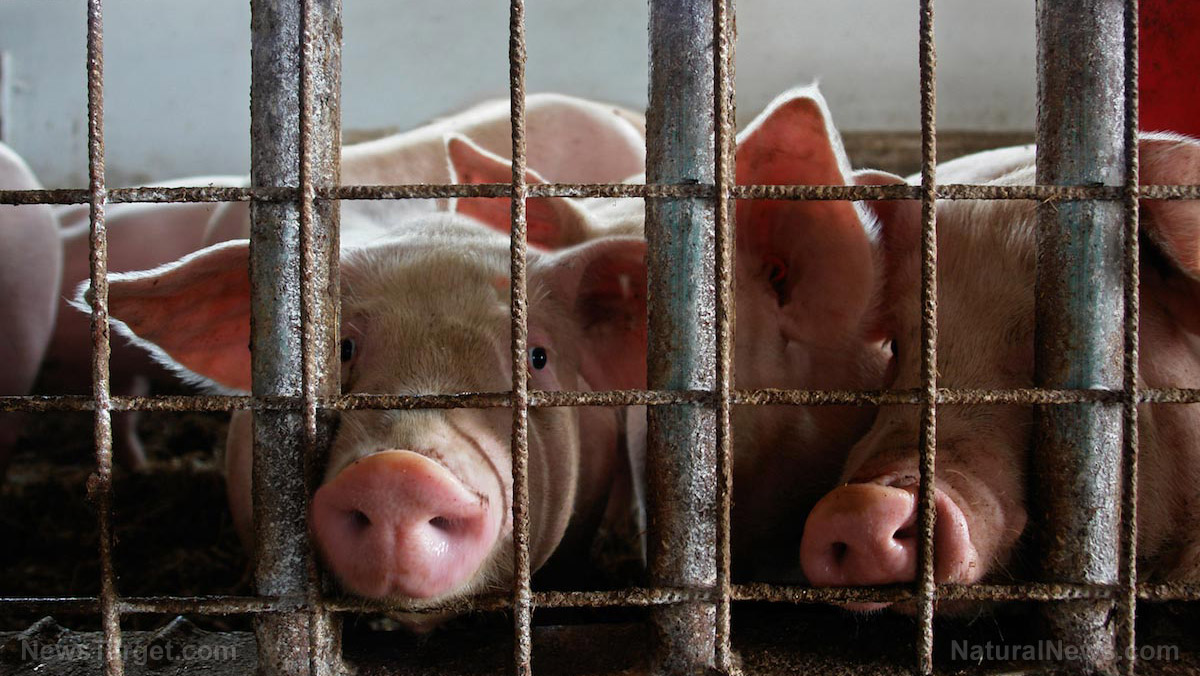CONFINED ANIMAL FEEDING OPERATIONS and Big Ag chemicals main causes of SUPERBUGS that are resistant to antibiotics
Preventable diseases are on the rise thanks to all the drugs and chemicals used in the CAFOs of America. The animals are abused and mistreated, drugged up and then fed pesticide-laden food and guess what? You are what you eat. A new study reveals it’s much worse than the conventional-food eating world thought. Check this.
A new scientific review warns that the widespread use of farm chemicals may be fueling the global rise of antibiotic-resistant “superbugs,” posing a serious threat to public health and the environment. Published in Environmental Geochemistry and Health, the comprehensive study connects pesticide contamination in water systems to the rapid evolution of bacteria that can withstand even the strongest antibiotics.
- Pesticide-contaminated water is accelerating the rise of antibiotic-resistant “superbugs,” with researchers warning that agricultural runoff and hospital waste are creating perfect breeding grounds for microbial resistance.
- Certain pesticides, like glyphosate and 2,4-D, directly promote bacterial resistance to life-saving antibiotics, while others, such as chlorpyrifos and azoxystrobin, enhance gene transfer and biofilm formation that protect resistant microbes.
- Experts criticize regulatory failure, urging a ban on pesticide approvals unless proven not to contribute to antibiotic resistance, as the current system overlooks this escalating global health threat.
- Researchers recommend personal protective actions, including filtering tap water, eating organic, and detoxifying with foods and supplements, to reduce exposure to environmental chemicals driving antibiotic resistance.
Farm Chemicals Create Unstoppable Superbugs, Researchers Warn
Antibiotic-resistant infections already claim around 5 million lives each year, according to 2019 data. If trends continue, the World Bank estimates the crisis could cost the global economy $3.4 trillion annually by 2050 and increase healthcare costs by another $1 trillion.
Pesticides and Antibiotics: A Toxic Combination
Researchers warn that water systems across the globe are becoming breeding grounds for resistant bacteria due to the simultaneous presence of antibiotics and pesticides. Agricultural runoff, hospital waste, and poorly regulated industrial pollutants all contribute to this toxic soup. Because global water systems are interconnected, contamination in one region can have worldwide consequences.
The study’s lead author, Dr. Vishwajeet Sonkar, explains that pesticides act as selective pressures on microorganisms. Like antibiotics, these chemicals kill susceptible bacteria while allowing resistant strains to survive and multiply. Over time, these hardy microbes become dominant, leading to the development of “superbugs” that traditional medications can no longer treat.
How Bacteria Defend Themselves
Bacteria have evolved several sophisticated strategies to resist both antibiotics and pesticides. These include:
- Efflux pumps, which expel harmful chemicals from their cells.
- Horizontal gene transfer, where bacteria share resistance genes with others through plasmids.
- Biofilm formation, where bacteria cluster into protective communities that are up to 1,000 times more resistant to treatment.
- Persister cells, dormant cells that survive antibiotic treatment and later repopulate with resistant strains.
The study highlights that these mechanisms become far more prevalent in environments contaminated by both antibiotics and pesticides.
Specific Chemicals Linked to Resistance
Researchers identified several farm chemicals that play a direct role in encouraging antibiotic resistance:
- Glyphosate, 2,4-D, and dicamba promote resistance to common antibiotics like tetracycline and ampicillin.
- Chlorpyrifos increases the transfer of multidrug-resistant genes.
- Azoxystrobin, a fungicide, strengthens the defenses of Pseudomonas aeruginosa, a notoriously drug-resistant bacterium.
These findings show a measurable connection between agricultural practices and the growing failure of critical medical treatments. Critics argue that current regulations are dangerously outdated. Advocacy group Beyond Pesticides urges the U.S. Environmental Protection Agency (EPA) to stop approving pesticides unless they are proven not to contribute to antibiotic resistance — a major policy shift from current practice.
What You Can Do to Protect Yourself
While systemic change is essential, individuals can take immediate steps to protect themselves:
- Filter your water: Invest in high-quality filtration systems that remove both pesticide residues and pharmaceutical contaminants.
- Eat defensively: Focus on organic, whole foods rich in natural antimicrobials like garlic, oregano, and fermented products.
- Support detoxification: Use natural detox aids like milk thistle and N-acetylcysteine to help your liver process toxins.
The study underscores the urgent need for both personal and global action. With antibiotic resistance posing a threat equal to or greater than future pandemics, reversing the chemical saturation of our environment may be essential for survival.
Bookmark Infections.news to get the latest updates about the engineered “bird flu pandemic” and other ways Big Food, Big Ag, and Big Pharma are infecting the meat, dairy and egg supply with pathogens and parasites.
Sources for this article include:
Pandemic.news
NaturalNews.com
SHTFplan.com
NaturalHealth365.com
Read full article here


